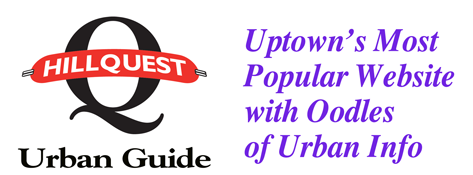 After serving the community for 60 years, in 1979, the City of San Diego had to demolish the aging Vermont Street footbridge for safety reasons.
After serving the community for 60 years, in 1979, the City of San Diego had to demolish the aging Vermont Street footbridge for safety reasons.  Pedestrians were then required to cross Washington Street, a high-speed commuter artery. At the time the bridge was removed, the neighborhood debated whether to request the city to replace it. Some argued it would provide easy access for criminal activity.
Pedestrians were then required to cross Washington Street, a high-speed commuter artery. At the time the bridge was removed, the neighborhood debated whether to request the city to replace it. Some argued it would provide easy access for criminal activity.
The city commissioned a design in 1982, but a lack of funding delayed the project. In 1990, the city agreed to make the bridge its first public art infrastructure project. Pro-bridge residents seized the opportunity to show their skeptical neighbors how a new bridge could be an artistic landmark for the neighborhood. However, the selected art consultant, Stone/Paper/Scissors, did not enjoy unanimous support. First, the opponents preferred to “hide” the bridge by keeping it plain and painting it green to match the eucalyptus groves at either end. And, since the bridge had already been completely designed, the structural engineering consultant resisted changes that might weaken the structure. To overcome these obstacles, the artists worked closely with the residents to select design themes. After gaining their support, the artists suggested that the bridge should stand out as a gateway to the community. Their concept won out, and a bold cobalt blue color was chosen.
Positive themes of bipedal, historical and transformative movement were incorporated as quotes and artistic flourishes, sandblasted into the deck and carved into the stainless steel panels on the railings. Gateway columns at either end reflected the two neighborhoods — one modern, the other historic. The artists then worked at length with the engineering consultant to ensure these elements could be incorporated without compromising structural integrity. The $1.2 million project was funded through TransNet, a regional .5¢ sales tax for transportation projects passed by the region’s voters in 1988 (and expired in 2008). Anticipating the new bridge, the large Sears store and parking lot on the south side of the bridge was redeveloped as the Uptown District. The project included a mix of shops, a major grocery store, small offices and 310 homes. All residential parking and 37% of the commercial parking is underground, leaving much of the surface for sidewalk cafes, plazas and landscaping.
450 people attended the bridge’s unveiling in December 1994. A year later, the bridge received a coveted “Orchid” design award. 15 year later, its community support remains strong. The neighborhood sponsors bridge clean ups and repair by providing both funding and volunteers. Thankfully, what began as merely a “replacement bridge” has become a key part of our neighborhood.
You may also like...
Sidebar not configured yet. You can place widgets by navigating to WordPress Appearance > Widgets.

